Sloth Bear
- January 10, 2024
- 0 comment
The sloth bear, a captivating denizen of the Indian subcontinent, emerges as a unique and enigmatic creature within the rich tapestry of wildlife. Scientifically known as Melursus ursinus, this bear species boasts distinctive features that set it apart. Cloaked in a shaggy coat and adorned with a characteristic white V-shaped mark on its chest, the sloth bear presents a sight both awe-inspiring and mysterious. With a robust build, long claws, and a flexible snout, it navigates its preferred habitats of forests, grasslands, and scrublands with remarkable dexterity. Unlike its bear counterparts, the sloth bear exhibits a solitary disposition, occasionally convening during the mating season.
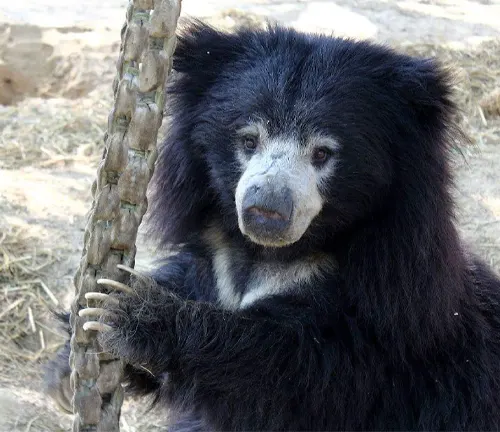
Vocalizations ranging from grunts to huffs form part of its unique communication repertoire, adding to the allure of its behavioral traits. Omnivorous by nature, sloth bears showcase a particular penchant for termites and ants, utilizing their impressive claws for efficient foraging. As contributors to their ecosystem, they play a crucial role in seed dispersal and maintaining ecological balance. However, the sloth bear faces challenges such as habitat loss, human-wildlife conflict, and poaching, placing it on the vulnerable list of the International Union for Conservation of Nature (IUCN). Despite these challenges, efforts in responsible tourism, awareness campaigns, and conservation initiatives stand as beacons of hope, illuminating a path toward the continued preservation of this extraordinary species.
| Specification | Description |
|---|---|
| Scientific Name | Melursus ursinus |
| Family | Ursidae |
| Habitat | Forests, grasslands, and scrublands in the Indian subcontinent |
| Appearance | Shaggy coat, distinctive white V-shaped mark on the chest, long claws, flexible snout |
| Size | Adult weight: 200 to 300 pounds, Length: 5.6 to 6.6 feet (including the tail) |
| Behavior | Primarily nocturnal, solitary with occasional gatherings during mating season |
| Communication | Vocalizations include grunts, huffs, and snorts |
| Diet | Omnivorous, with a preference for termites and ants |
| Reproduction | Typically gives birth to 1-2 cubs, with a gestation period of about 7 months |
| Lifespan | Around 20 to 25 years in the wild |
| Conservation Status | Vulnerable (IUCN Red List) |
| Threats | Habitat loss, human-wildlife conflict, poaching |
| Unique Features | Climbing ability, defensive posture involving standing on hind legs, distinctive chest mark for identification |
| Importance in Ecosystem | Seed dispersal, control of insect populations, maintaining ecological balance |
| Conservation Initiatives | Responsible wildlife tourism, awareness campaigns, rehabilitation programs |
| Notable Challenges | Human-wildlife conflict, habitat loss, need for stronger conservation efforts |
Guardians of the Forest
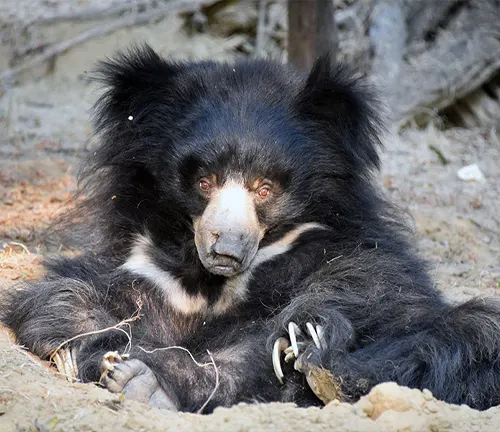
The mysterious and intriguing world of wildlife introduces us to the sloth bear, a fascinating creature with unique characteristics. Sloth bears (Melursus ursinus) are native to the Indian subcontinent, predominantly found in forests, grasslands, and scrublands. These bears exhibit a distinctive appearance and behaviors that set them apart in the animal kingdom.
Physical Characteristics
The sloth bear is easily identifiable by its shaggy coat, long claws, and distinctive white V-shaped mark on its chest. These physical adaptations play a crucial role in their survival within their chosen habitats. Their long, flexible snouts and powerful jaws make them efficient hunters and foragers.

Behavioral Traits
In addition to their physical attributes, sloth bears display intriguing behavioral traits. Unlike other bear species, sloth bears are known for their solitary nature, with occasional gatherings during mating season. Their vocalizations, ranging from grunts to huffs, are part of their communication repertoire, contributing to their social interactions.

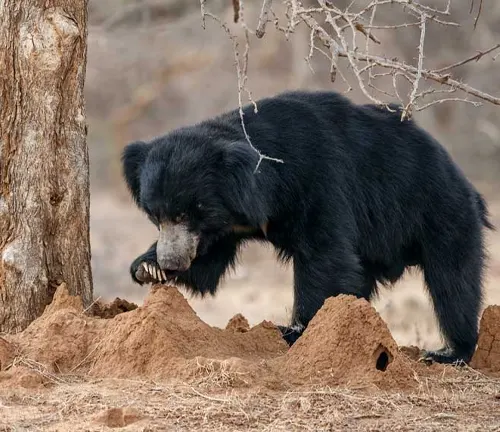
Diet and Feeding Habits
Sloth bears are omnivores with a preference for termites and ants. Their long claws aid in digging into termite mounds, showcasing their specialized feeding habits. Understanding their dietary preferences is essential for conservation efforts and ensuring the availability of their natural food sources.
Reproduction and Life Cycle
The mating habits and life cycle of sloth bears are equally fascinating. Mating rituals, gestation periods, and the nurturing of cubs shed light on the intricate dynamics of these bears’ family structures. Exploring these aspects contributes to a deeper understanding of their reproductive biology.
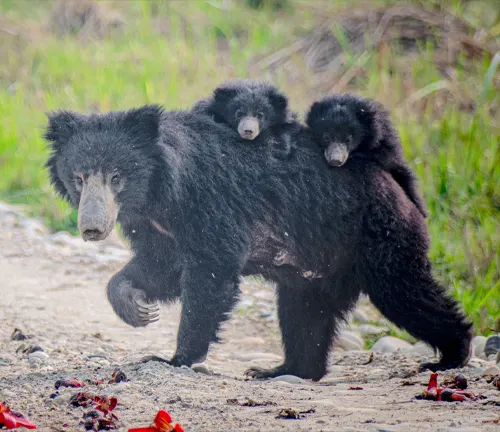
Conservation Status
Despite their uniqueness, sloth bears face threats to their existence. Human-wildlife conflict, habitat loss, and poaching have led to a concerning decline in their population. Recognizing their current conservation status is crucial for implementing effective measures to protect and preserve these extraordinary creatures.
Human-Wildlife Conflict
Instances of conflict between sloth bears and human populations are not uncommon. Understanding the reasons behind such conflicts and exploring mitigation efforts are essential steps towards promoting coexistence and minimizing harm to both humans and bears.
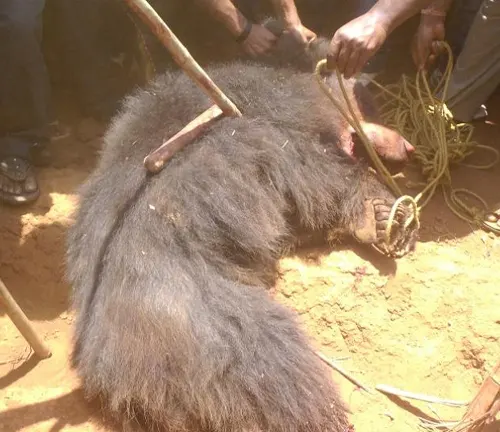
Role in Ecosystem
The role of sloth bears in maintaining biodiversity cannot be overstated. Their impact on the ecosystem, from seed dispersal to controlling insect populations, underscores their significance in preserving the delicate balance of their habitats.
Myths and Folklore
Sloth bears hold cultural significance in various societies, often inspiring myths and folklore. Exploring these stories provides insights into the deep connections between local traditions and the natural world.
Tourism and Awareness
Responsible wildlife tourism offers opportunities to observe sloth bears in their natural habitats. Educational programs and awareness campaigns play a crucial role in fostering a sense of responsibility towards the conservation of these magnificent creatures.
Unique Features for Identification
Researchers utilize specific characteristics to identify and study sloth bears in the wild. Understanding these features aids in monitoring populations and implementing conservation strategies effectively.
Veterinary Care and Rehabilitation
In cases of injured or orphaned sloth bears, veterinary care and rehabilitation programs become lifelines. Success stories of rescued bears highlight the positive impact of human intervention in ensuring their well-being.
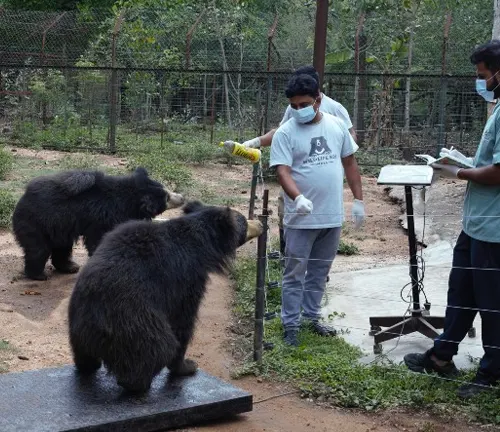
Case Studies of Sloth Bear Rescues
Examining specific instances of sloth bear rescues provides valuable insights into the challenges faced by these animals and the successes achieved through dedicated conservation efforts.

Future Challenges and Opportunities
Anticipating future challenges in sloth bear conservation is crucial for developing proactive strategies. Opportunities for further research, habitat protection, and community involvement present promising avenues for ensuring a sustainable future for sloth bears.
Frequently Asked Questions (FAQs)
- Where do sloth bears live?
Sloth bears are native to the Indian subcontinent, including countries like India, Sri Lanka, Nepal, and Bhutan. - What is the lifespan of a sloth bear in the wild?
In the wild, sloth bears typically live around 20 to 25 years, though this can vary depending on factors like habitat and threats. - Are sloth bears related to sloths?
No, sloth bears are not related to sloths. They belong to the bear family (Ursidae), while sloths are a distinct group of mammals found in Central and South America. - How do sloth bears communicate?
Sloth bears communicate using a variety of vocalizations, including grunts, huffs, and snorts. These sounds serve for social interactions and signaling. - Can sloth bears swim?
Yes, sloth bears are capable swimmers and may use water bodies for various reasons, including cooling off and foraging. - What is the primary threat to sloth bears?
The main threats to sloth bears include habitat loss due to human activities, human-wildlife conflict, and poaching. - Are sloth bears nocturnal?
Yes, sloth bears are primarily nocturnal, being more active during the night and resting during the day in sheltered areas. - How many cubs does a sloth bear usually have?
Sloth bears typically give birth to 1-2 cubs, and they are attentive mothers, caring for their cubs for an extended period. - Do sloth bears have any predators?
While adult sloth bears don’t have many natural predators, cubs may be vulnerable to larger predators like tigers and leopards. - Can sloth bears climb trees?
Yes, sloth bears are excellent climbers and may use their tree-climbing abilities for various purposes, including accessing food. - Do sloth bears have a specific mating season?
Sloth bears do not have a strict mating season, but mating activity often peaks during the monsoon season. - How much do sloth bears weigh on average?
Adult sloth bears can weigh between 200 to 300 pounds, with males typically being larger than females. - What is the significance of the white V-shaped mark on a sloth bear’s chest?
The white mark is unique to each bear and is often used for identification. It may have social or communicative purposes among sloth bears. - Are sloth bears listed as an endangered species?
Sloth bears are currently listed as vulnerable on the International Union for Conservation of Nature (IUCN) Red List, indicating a high risk of endangerment. - How do sloth bears defend themselves?
Sloth bears are known for their defensive behavior, standing on their hind legs and using their long claws and powerful jaws if they feel threatened.


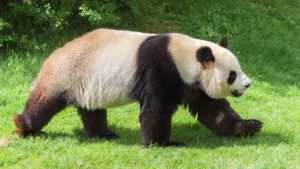
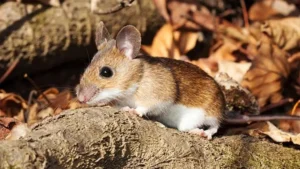


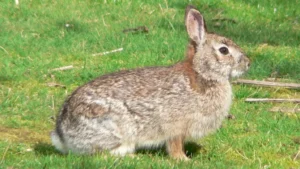

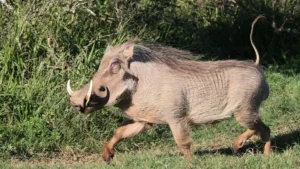


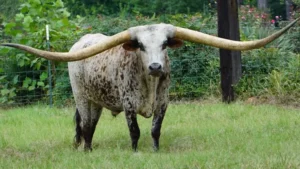


Leave your comment